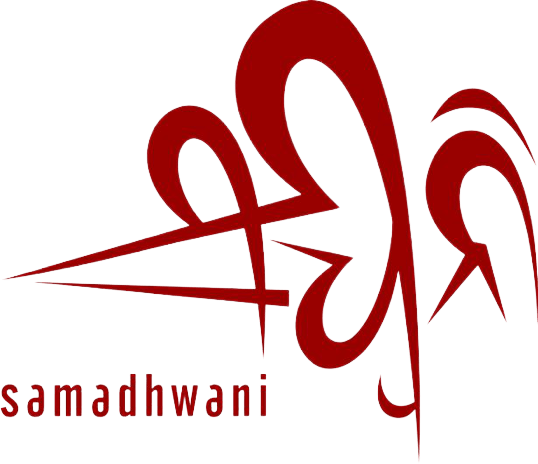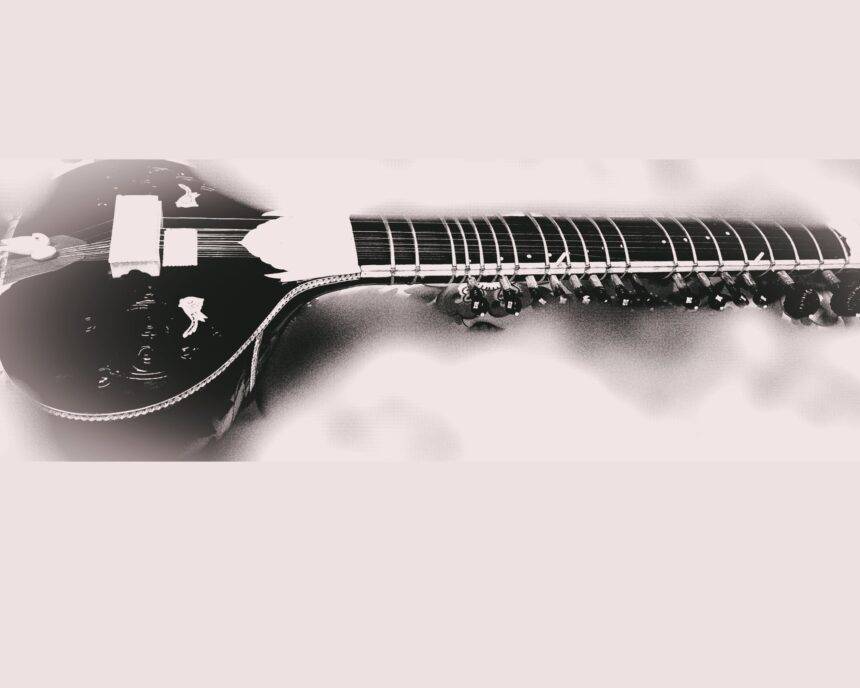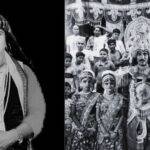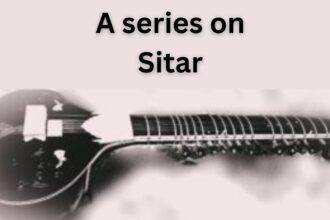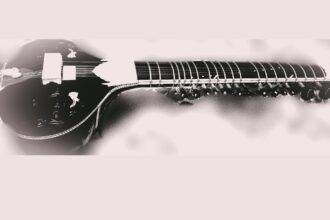When I contemplate composing a grand musical piece to be performed on my sitar, a vivid melodic tapestry unfolds in the depths of my imagination. With the sitar gracefully nestled in my hands, a raag resonates within my mind, and a descriptive structure of singing takes shape within my heart. The nuances of vocalization occupy my thoughts, effortlessly flowing from within. It is not a deliberate endeavor; rather, it arises instinctively. Upon the stage, I am able to envision the entire framework of this melodic tapestry. This inclination towards singing has become the guiding purpose of my life. My aspiration is to play the sitar in a manner that emulates the expressive qualities of my voice. There exists a distinct divergence between the techniques of instrumental play and the intricate artistry of singing. However, when these two elements harmoniously merge, they create a celestial symphony. The incorporation of the khayal style onto my sitar is not a conscious decision on my part. It is a divine gift that has seamlessly permeated my playing due to my deep connection with khayal singing and the esteemed vocalists who have influenced my life- Ustad Vilayat Khan.
Singing on the sitar is a unique and captivating approach to playing the instrument that Ustad Vilayat Khan imagined and performed through his sitar. It involves infusing the melodic intricacies and expressive qualities of vocal singing into the sound produced by the sitar’s strings. This technique creates a fusion of two distinct art forms, resulting in a mesmerizing and soulful musical experience. That is why it is called the ‘gayaki’ baaj. It emulates the nuances of the human voice through techniques such as meend (glides), gamakas (ornamentations), and taans (flourishes). The style aims to replicate the fluidity, emotiveness, and melodic improvisation inherent in vocal performances. It requires a deep understanding of both vocal and instrumental techniques. It involves careful control of the strings, precise finger placements, and a keen sense of timing and expression.
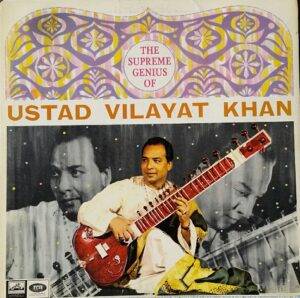
Ustad Vilayat Khan implemented a series of modifications to the sitar to achieve the desired level of melodic capability. One significant change was the transformation of the traditional seven-string sitar into a six-string version by removing one jod string. This adjustment aimed to reduce the resonance of the jod sound, allowing for clearer execution of bol patterns by creating a greater distance between the madhyam string and the jod. Additionally, Ustadji replaced the kharaj pancham string with a steel string.
Another crucial modification involved strengthening the foundation of the sitar to support intricate playing techniques. The thinner tabli, or soundboard, was replaced with a thicker one capable of withstanding powerful right-hand strokes, enabling the tabli to absorb the pressure transmitted through the bridge. The frets were also upgraded to be thicker and made from stronger metal, with German silver replacing brass. The new fret design facilitated the accurate execution of meends.
The bridge underwent changes in both its strength and height. It was made stronger and of higher quality to accommodate Ustad Vilayat Khan’s preference for a round or heavy jawari. The increased height of the bridge, along with the unique shape of the tabli, allowed for a greater distance between the strings and frets, which was essential for producing the characteristic gamaks and meends in the sitar’s melodic ornamentation.
To meet the demands of forceful playing, a robust mechanism was employed to connect the dand (neck) with the main tumba (gourd) of the sitar. This involved the use of metal screws and specialized techniques to ensure durability and stability during vigorous performances. The tar gahan, the wooden piece supporting the sympathetic strings, was also made thicker to withstand higher tension. Ustad Vilayat Khan adjusted its curvature to further enhance sound production.
These modifications implemented by Ustad Vilayat Khan transformed the sitar, enabling it to achieve an elevated level of melodic capability and better meet the artistic vision and technical requirements of the musician.
Not just the restructuring of the sitar it’s the whole playing techniques, the melodic content that describes the gayaki, a style of playing that emulates the nuances and expressiveness of vocal music on the sitar. His unique interpretation of this style brought a distinct and captivating quality to his sitar performances. Here are some characteristics of Ustad Vilayat Khan’s Gayaki ang:
Vocal-like Phrasing: In the Gayaki ang, Ustad Vilayat Khan aimed to replicate the fluid and lyrical qualities of the human voice through his sitar playing. He meticulously crafted his melodic phrases, imbuing them with the subtle microtonal variations, slides, and ornamentations reminiscent of vocal singing. His sitar seemed to breathe and sing, evoking deep emotional resonance in the listener.
Emotive Expression: The gayaki ang was marked by his ability to convey a wide range of emotions through his sitar. He captured the essence of different moods, from deep introspection to ecstatic joy, and translated them into melodic phrases that resonated with profound emotional depth. His playing had the power to move and stir the hearts of his audience.
Raga Interpretation: It involved a highly nuanced and sensitive approach to interpreting ragas (melodic frameworks). He explored the intricate melodic contours of each raga, exploring its various moods, and unfolding its unique character through his sitar. His improvisations within the ragas showcased his deep understanding of their essence and his ability to bring out their inherent beauty.
Ornamentations and Gamaks: The Gayaki ang of Ustad Vilayat Khan was characterized by the masterful use of ornamentations and gamaks. He employed delicate slides, meends (glides), murkis , and gamak tan-s to infuse his sitar playing with expressive embellishments. These intricate ornamentations added richness and depth to his melodic explorations.
Layakari (Rhythmic Prowess): Ustad Vilayat Khan’s encompassed a strong sense of layakari, or rhythmic virtuosity. He displayed remarkable control over the rhythmic aspect of his sitar playing, seamlessly integrating intricate rhythmic patterns and improvisations within the overall melodic structure. His sitar taans (fast note patterns) and rhythmic variations were executed with precision and dexterity.
Through his impeccable command over the Gayaki ang, Ustad Vilayat Khan brought an unparalleled level of expressiveness, emotion, and lyrical beauty to his sitar performances. His style continues to inspire and influence sitar players, as well as enthusiasts of Hindustani classical music, around the world.
